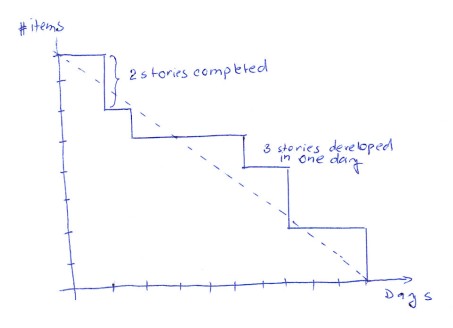Even if Agile was initially considered as an anarchic approach due to practices like self-organization, the reality is that it requires a lot of discipline. Metrics is an important tool to assess the continuous improvement efforts of Scrum teams. However, setting a good metric program is not obvious. The book “The Agile Culture” contains interesting thoughts about what could make a metrics program fail.
Many metrics programs fail and many more do not achieve their intended goals. There are many reasons for this but some of the most common are
* Unclear goals and vision of what the organization is trying to achieve.
* Misuse of metrics for competitive comparisons or as a punishment rather than a learning process.
* Using metrics for political or other purposes rather than using them to help people to do their jobs more effectively and to deliver more value.
* Poor communication of the goals and intentions of the program to those involved.
* Focusing on process and not results.
* Too many metrics leading to lack of focus and ineffectiveness.
* Measuring vanity metrics.
* Measurements are not timely or the action cycle time is too long.
* Poor leadership, which is focused on the metrics process rather than its goals and effect.
* Not adapting to the changing needs of the business. Metrics will change over time and you need a mechanism to ensure they remain relevant and effective.If you must have an organizational metrics program, then focus on using it to help individuals and teams learn how to take ownership of their own processes and the metrics for improving them. Focus on results oriented rather than in-process metrics and work to help, support, and shield your teams.
Source: “The Agile Culture: Leading through Trust and Ownership”, Pollyanna Pixton, Paul Gibson and Niel Nickolaisen, Addison-Wesley,
Predictability, reliability and adaptability are the three aspects of Agile projects that should be supported by metrics. Besides the traditional Scrum burndown chart, Agile teams can use many different metrics to track their progress and their capability to regularly deliver value as a team and velocity is the most known of these metrics.

Image source: http://www.methodsandtools.com/archive/scrumburndown.php
Like in a traditional project management system, the collection and usage of metrics is a delicate activity. Unless you are in a context where accountability is a strong factor, like consulting for instance, the collection of data for reporting and metrics has often been considered mostly as an annoying part of software development jobs. If a metric is used for personal evaluation, there will be a tendency to adapt the work to achieve a good score. If its collection is cumbersome and its value unclear, people will produce fake numbers. Measurement is a strong tool to assess software development practices. It should however be used wisely in with personal and collective improvement as a goal.
Further reading
Software Development Metrics that Matter
Software Metrics: Successes, Failures and New Directions
Everything You Always Wanted to Know About Software Measurement
Agile Metrics: Seven Categories

